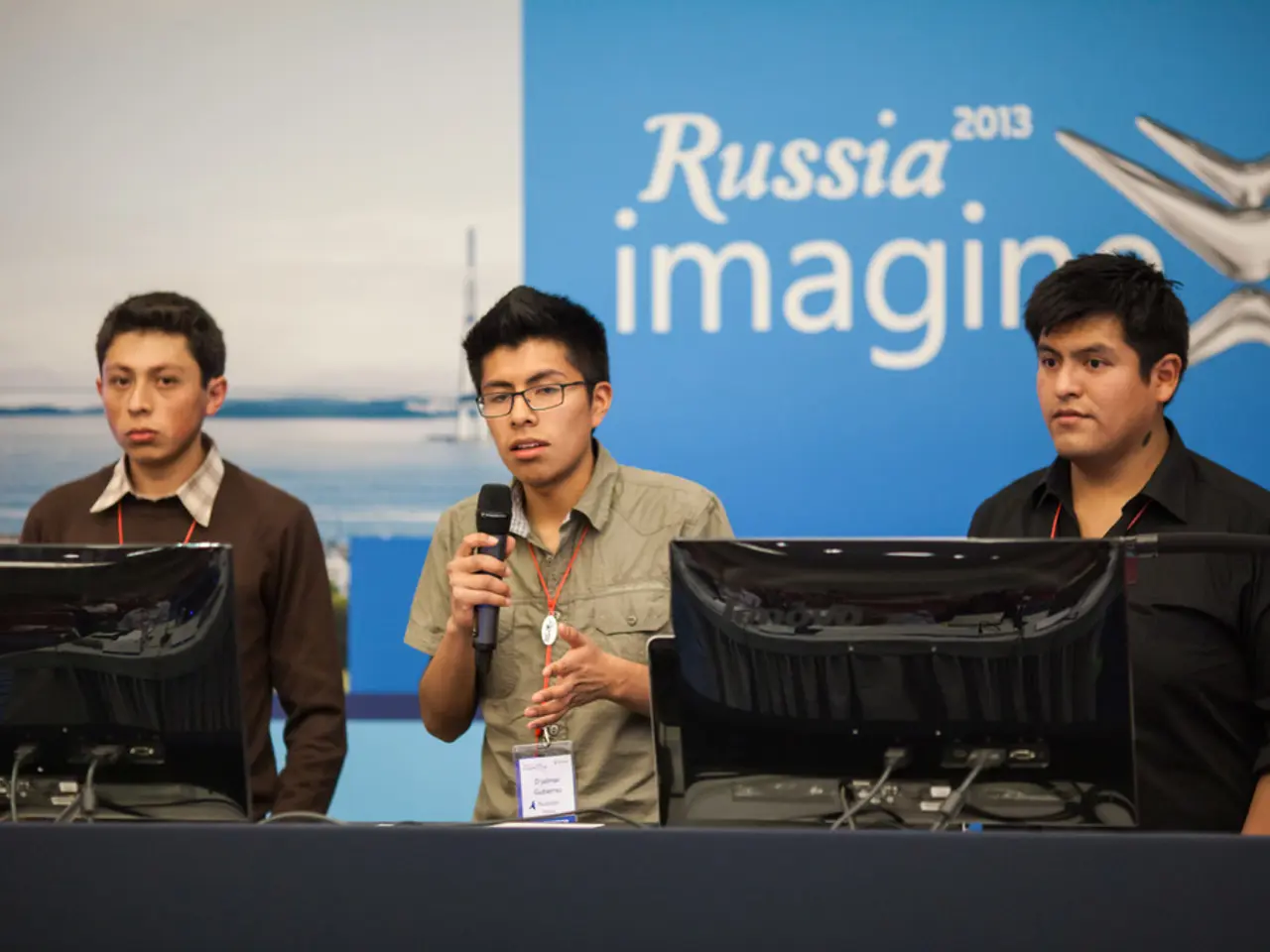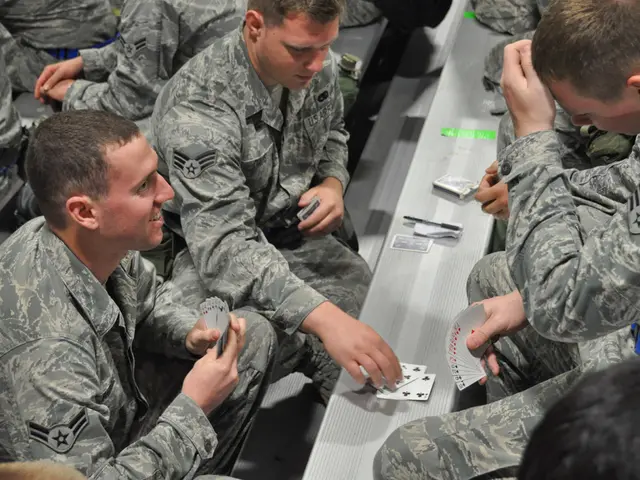Struggle for Connected Combat Environment Unveiled
In the modern battlefield, the influx of high-resolution images, multispectral data, and real-time information from various platforms is pushing the boundaries of network capabilities. This deluge of data, which includes electro-optical and thermal layers, radar overlays, topographical information, and more, is becoming orders of magnitude larger, putting significant pressure on networks.
The increasing size of files and the number of transmitters necessitates a rapid increase in bandwidth. However, this poses a challenge, as commanders must determine what is important, when it is important, and to whom it is relevant to build priority stacks. The priority stack, a fundamental concept in a system with limited bandwidth, determines what gets transmitted quickly around the multi-domain battlespace.
One of the solutions being considered by the Department of Defense is space-based communications as a means to bypass line-of-sight constraints between units. However, space-based communications have their own problems, such as high cost, visibility to the enemy, and delays in the network. Sharing data between satellites also imposes more delays, adding to the complexity of the issue.
The volume of data gathered exceeds human capacity to monitor and analyze it. As sophisticated sensors are added to more and more platforms, there is also a higher volume of high-fidelity, multispectral data points, all competing for bandwidth. In such a scenario, artificial intelligence (AI) is thought to help by selecting relevant data, but its relevance depends on what it has been programmed to look for.
The exercise replicated a congested battlespace and a contested electromagnetic spectrum, unlike previous decades-long wars. Land forces, however, consist of thousands of vehicles with limited power and small antenna, making it difficult for them to pass data around the force and risking targeting due to their signature. Due to insufficient nodes in their communications network, saturated headquarters, and enemy jamming, the kill chain for the fire mission took four hours to complete.
In October 2021, a special operations forces team observed nearly a hundred enemy vehicles at a refueling point in the California desert during an exercise. The vision of a connected battlefield involves an any-sensor-to-any-shooter network, with data moving seamlessly between air, land, maritime, space, and cyber forces in real time. However, the seamless transmission of data between domains along any available route may either restrict data packets to a size that land forces can support or saturate the available network of the land forces beneath air forces.
Ships and aircraft tend to have access to more power and larger directional antenna, allowing them to transfer large volumes of data in real time through free-space optical links and other high-bandwidth transmissions. Despite these advancements, there is no feasible way to accumulate data in real time, and aircraft and other systems can only download captured data upon landing, with sifting and dissemination taking a long time.
In conclusion, the modern battlefield is evolving rapidly, with an increasing need for real-time, high-fidelity data. However, the challenges of managing this data deluge, including bandwidth constraints, the need for priority stacks, and the limitations of current communication systems, are significant. The development of new technologies and strategies will be crucial in overcoming these challenges and ensuring the success of military operations in the future.
Read also:
- Peptide YY (PYY): Exploring its Role in Appetite Suppression, Intestinal Health, and Cognitive Links
- House Infernos: Deadly Hazards Surpassing the Flames
- Aspergillosis: Recognizing Symptoms, Treatment Methods, and Knowing When Medical Attention is Required
- Biomarkers as potential indicators in guiding treatment for ulcerative colitis?








